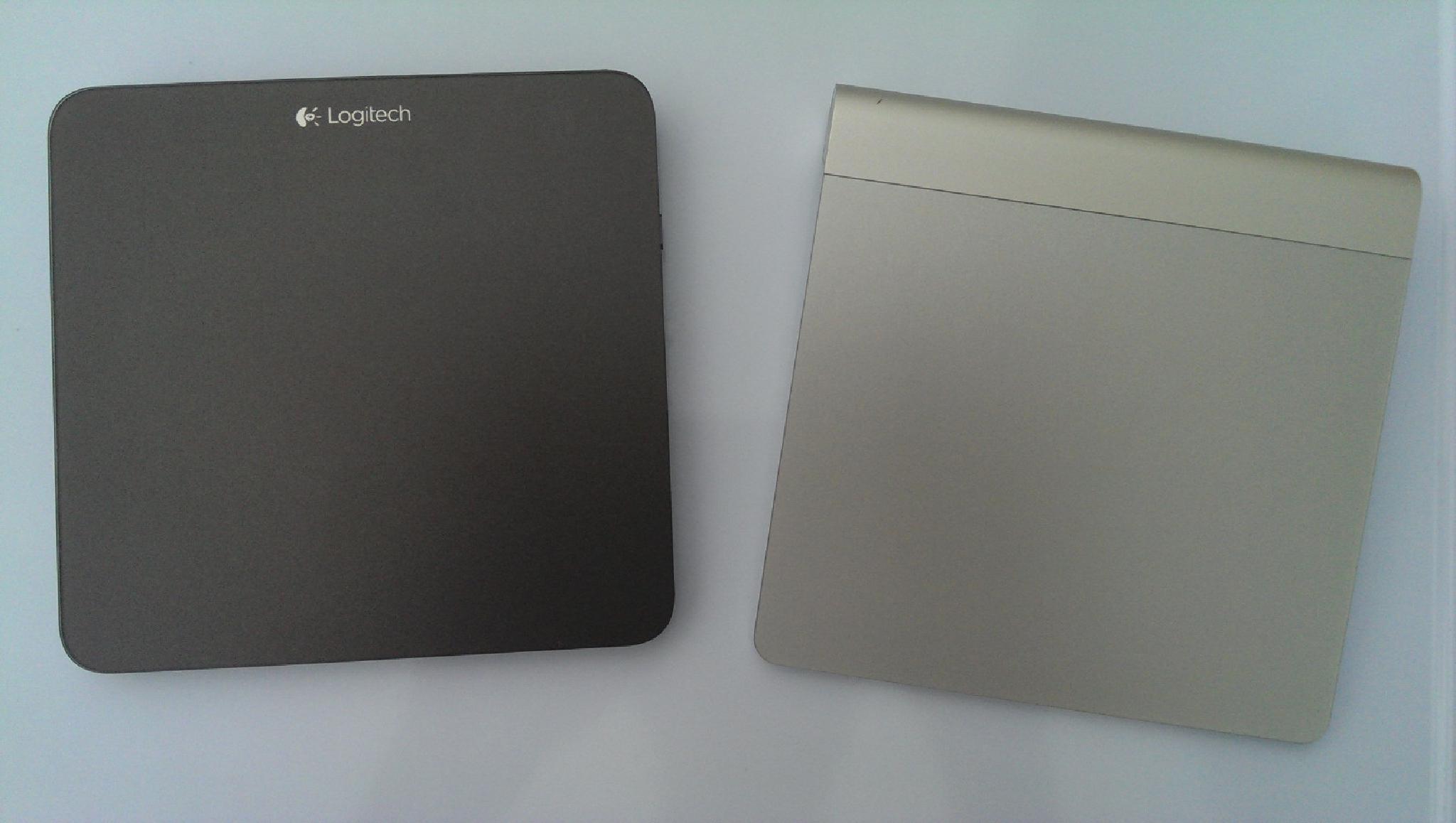Desktop Touchpads for Linux: Logitech T650 vs. Apple Magic Trackpad
Monday, 03 November, 2014
Working “on the road” a lot I have grown used to touchpads and have developed a slight aversion to mice (the gadgets, not the animals).

Due to that I caught myself sitting around with my notebook even when I was at home where I could be spending time at my desk with a docking station, a proper keyboard and a bigger screen. So I decided it was time to replace my mouse with a modern touch device.
My requirements were as follows:
- GNU+Linux compatibility (of course)
- Ability to recognize a multitude of gestures
- Appealing haptics, design and build quality
After some research it turned out that the most promising canidates appeared to be the Logitech T650 and Apple’s Magic Trackpad.
Look and Feel
Both devices are a pleasure to interact with, as they have big glassy surfaces and a “valuable overall feeling” to them. The Magic Trackpad feels a bit sturdier as it is mostly composed of metal parts. Moreover it looks somewhat more “modern” whereas I considered the T650 to be a better match for the other components of my setup. Mechanical clicks on the T650 require a decent amount of pressure which can be tedious after a longer usage period.
Connection
The Logitech T650 comes with its own dongle consuming one of my valuable USB slots. It was recognized after plugging in the dongle and turning on the device. As long as one sticks to Logitech products it is possible to connect up to six devices to that dongle using the Unifying Device Technology which is being brought to Linux by the Solaar project.
This policy of urging customers to buy more and more products of a particualar brand by using proprietary interfaces that are desigend to exclude or obstruct competitors’ products is often associated with Apple. In this particular case it is actually the other way round: The Apple Magic Trackpad uses the well established Bluetooth technology for connecting to the computer. This was achieved in less than a minute on Xubuntu 14.04 by pairing the device via the Blueman applet using the PIN 0000.
Gesture Recognition and Setup
The first thing to do with the T650 for Linux support is a firmware upgrade, because otherwise not even “tap to click” is functional. Unfortunately the software required for that procedure is only available for Windows, which was the first obstacle for me. Gestures get interpreted in the device’s hardware which then sends key events that are meant to trigger (Windows 8 specific) events. By mapping these keys to meaningful commands in the XFCE system settings I was able to make use of the built in gestures, which are limited to two and three finger swipes as well as (somewhat uncomfortable) edge swipes. I was not able to manage software like Touchégg or Ginn to recognize “real gestures” using both the synaptics and the evdev driver.
The Magic Trackpand on the other hand sends events that can be properly interpreted by Touchégg. I am using the synaptics driver for gestures of up to two fingers as it provides the smoothest scrolling experience and best integration with certain applications and Touchégg for dealing with everything that involves three or more fingers. For that purpose one must disable synaptic’s 3 finger recognition. This can be achieved by setting TapButton3 and ClickFinger3 to “0” via the synclient command (temporary) or a specific xorg configuration (permanent). Up to 5 fingers are being recognized and I have used swipe, drag, pinch and (double) tap gestures so far. KWin, which I use as window manager provides a lot of “fancy gimmicks” like smooth workspace switching animations and the “Present Windows” effect (comparable to OSX’s “Exposé”), which feels very natural when triggered by multitouch gestures.
Power
The T650 has a built-in battery. While this has the advantage of being rechargeable, it comes with the downside of being hard to replace (Never forget that batteries are wearing parts!). The Magic Trackpad is powered by 2 AA batteries which means that a regular battery change will be necessary. I cannot judge about the runtime as my testing period is not long enough, but both are reported to run for several weeks when used on a regular base.
Pricing
The Magic Trackpad is about twice as expensive as the T650, which is to be considered when comparing the two. I am lucky to get my mine used for a lower price, because a friend of mine has no need for the one that came bundled to his iMac.
Conclusion
The Magic Trackpad outperforms the T650 in almost every category I consider important. On the other hand you could save $30 if the aforementioned disadvantages of the T650 are not relevant to you. Moreover it must not be left aside that both devices may perform different on the platform they were orignially designed for. So if you are not using GNU+Linux exclusively but dual boot to OSX or Windows 8 then you may choose to buy the corresponding device so you can get the most out of your touchpad.
Some Additional Information about Touchégg
If you do not like to write configuration files by hand you may want to have a look at Touchegg GCE which offers a graphical frontend to set up Touchégg gestures. Moreover it is advised to build Touchégg from source if you want to use pinch gestures, because your distribution may not package the newest version where a pinching related bug has been fixed.